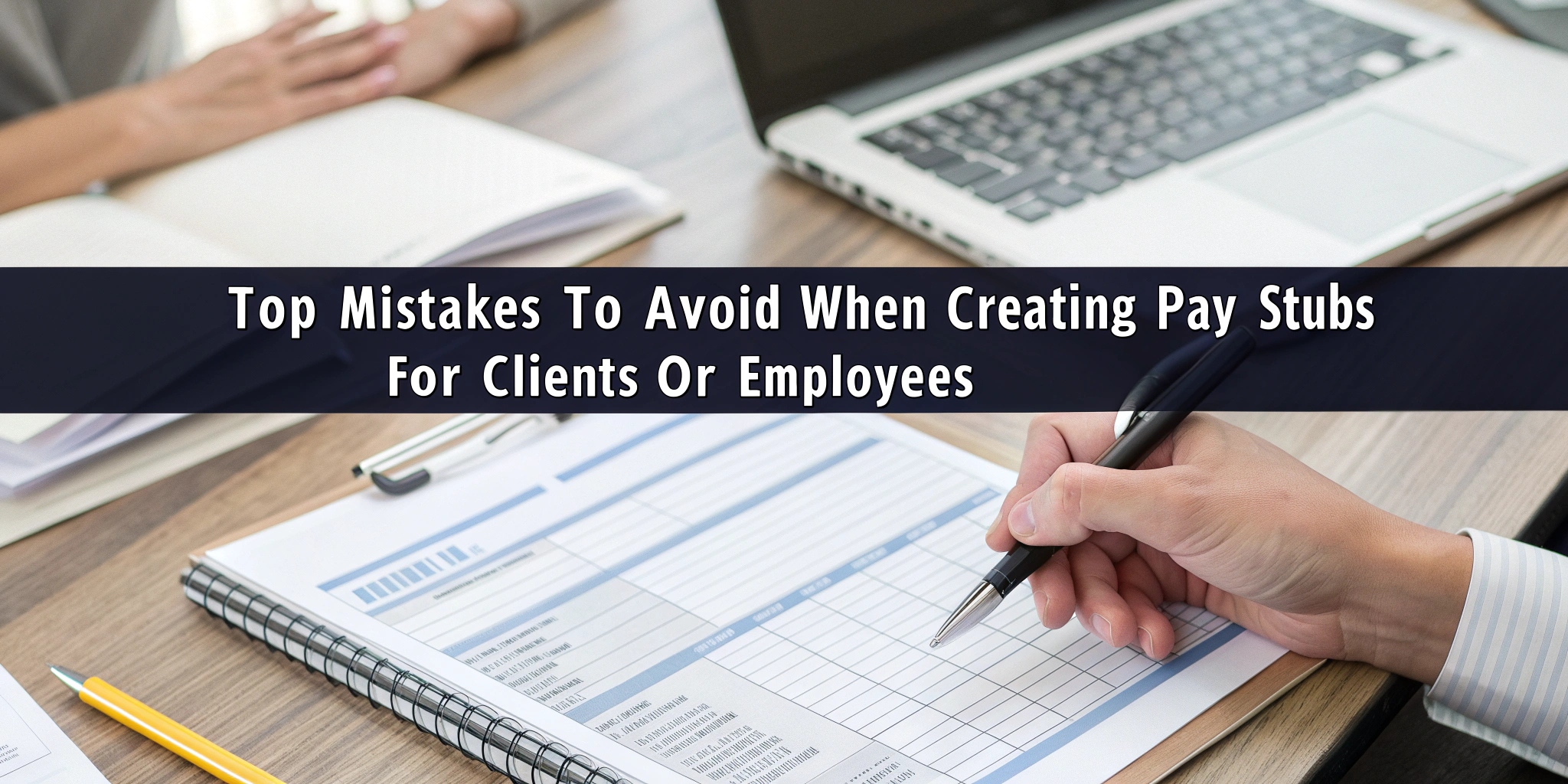
Top Mistakes to Avoid When Creating Pay Stubs for Clients or Employees
Pay stubs are critical financial documents that detail an employee’s earnings and deductions. Whether you're a small business owner, payroll provider, or freelancer handling HR services, creating accurate pay stubs is essential for legal compliance, transparency, and trust.
In this article, we’ll cover the top mistakes to avoid when generating pay stubs and how you can fix or prevent them.
1. Omitting Required Information
One of the most common errors is leaving out key details such as:
● Employer name and address
● Employee details (name, ID, position)
● Pay period dates
● Gross and net pay
● Taxes and deductions
● Overtime and bonuses
Why it matters: Missing fields can result in non-compliance with state or federal labor laws and cause confusion for employees.
Tip: Use a pay stub template or generator that includes all legally required fields.
2. Miscalculating Deductions and Taxes
Inaccurate calculations for federal, state, or local taxes, as well as benefits deductions (health insurance, retirement contributions), are costly errors.
Why it matters: Incorrect tax withholding can lead to IRS penalties, employee disputes, or year-end W-2 mismatches.
Tip: Always use updated tax tables and cross-verify calculations using reliable payroll software or consult a tax professional.
3. Incorrect Pay Periods
Listing the wrong pay period start or end dates can cause employees to question their pay or suspect errors.
Why it matters: Pay stub inconsistencies can erode trust and delay tax filings or loan applications where accurate income records are needed.
Tip: Clearly define and label pay periods (weekly, biweekly, etc.) and ensure your dates match the payroll cycle.
4. Not Updating Employee Information
Using outdated employee details such as an old address, changed job title, or incorrect tax filing status can lead to inaccuracies.
Why it matters: Pay stubs are official documents often used for housing, credit, and legal verification.
Tip: Regularly review and update employee profiles in your system before generating new stubs.
5. Ignoring Overtime or Bonuses
Failing to reflect extra earnings like overtime, holiday pay, commissions, or bonuses results in misleading pay stubs.
Why it matters: This can lead to payroll disputes, legal claims, or wage compliance violations.
Tip: Always account for additional income sources and document them separately in the pay stub.
6. Creating Inaccurate Hour Logs
For hourly workers, errors in logging or calculating worked hours can cause underpayment or overpayment.
Why it matters: Misreported hours affect not just pay but also compliance with labor laws like the Fair Labor Standards Act (FLSA).
Tip: Use time-tracking tools to automate and verify hours before calculating pay.
7. Using Unsecured or Unreliable Tools
Some businesses use free or unverified online tools that don’t comply with data security or formatting standards.
Why it matters: Sensitive employee data must be protected, and non-compliant stubs could be rejected by banks or auditors.
Tip: Choose trusted pay stub generators with security encryption, customization options, and legal compliance built in.
Conclusion
Pay stubs are more than just routine paperwork they’re official documents that play a vital role in financial, legal, and professional matters.
Avoiding the common mistakes outlined above will help you maintain accuracy, legality, and professionalism in your payroll process. With the right tools and a little attention to detail, generating flawless pay stubs can become a smooth and stress-free part of running your business.